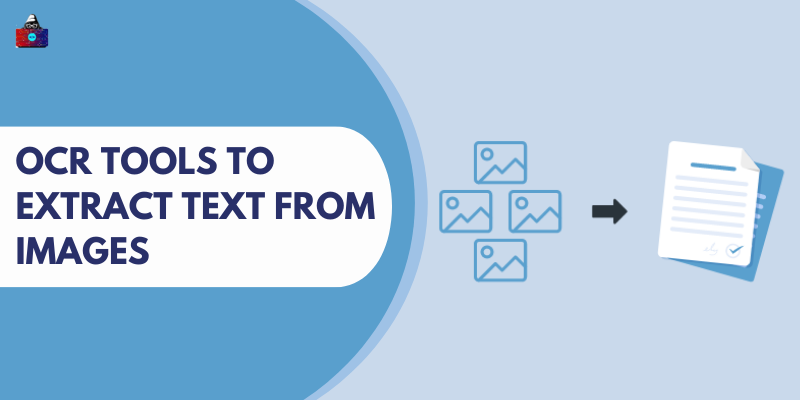A computer program, or simply a program, is a sequence of instructions that instructs the system to perform a particular task. For example, we use Google Maps to find a specific location and directions to that location. This application is instructed to do so via a program.
If you want to explore more about a program or a computer program, continue reading this article. This article will provide you with insights into a computer program and its various aspects.
So without further ado, let’s get started!
What is a Computer Program?
A computer program is a sequence of instructions written in a computer programming language that directs the computer to perform a certain task. Also, a computer programming language is a set of rules to write computer programs.
Alternatively, we can define a computer program as a detailed plan or structure to solve a particular problem. The following are some popular examples of computer programs that we use in our daily lives:
- MS Word for creating documents.
- MS Excel for creating spreadsheets.
- Google Chrome or Internet Explorer to surf the web.
- Whatsapp for instant messaging.
All these are computer programs, also known as applications or software, that carry out some specific tasks.
Example
Let us understand the concept of computer programs and computer programming language with a simple example. Consider a situation where a random person asks you about the address of a nearby Dominos store. You are likely to instruct that person with the following steps in a human language or simple English language:
- Go straight.
- Take the first left.
- Drive for half a kilometer.
- And, you will find Dominos on your left side.
This sequence of instructions guides that person to reach a nearby Dominos store. These same instructions can be given in other languages, such as Spanish, French, or other human languages.
Similarly, when it comes to a computer program, it does not understand simple English or other human languages. Instead, it uses a programming language that has well-defined syntax and rules.
At present, there are various programming languages in use, including C, C++, Java, C#, Python, Ruby, and Perl, to name just a few. You can choose one or more programming languages according to your interest, knowledge, and experience.
Let us say, we need to print a single statement using the Python programming language. It uses the ‘print’ word to print any statement enclosed in double-quotes, as shown below:
print "Welcome to TechGeekBuzz!"
The above statement instructs a computer system to print ‘Welcome to TechGeekBuzz!. It is just a single statement.
However, a computer program may include millions of lines of instructions. These lines of instructions are called the source code, and the process of writing these multiple lines of instructions is called computer programming.
Algorithm
An algorithm in computer programming is a sequence of instructions or step-by-step procedures that define how a certain task is to be performed to get the expected outcome.
We can relate an algorithm to a food recipe. If you try any new recipe, the first thing you do is carefully read the ingredients list and then follow the instructions carefully to prepare the dish.
Similarly, before writing a computer program to accomplish a specific task, programmers first create an algorithm that acts as a roadmap. They write a set of instructions in simple English. Since programmers write algorithms in the English language, they are independent of programming languages.
Suppose we need to print the sum of two numbers. The algorithm for this problem would be:
- Start
- Declare two numbers (whose sum you need to calculate), say num1 and num2
- Declare one variable, say sum, to store the result and set it to zero initially.
- Read the values of num1 and num2
- Use the ‘+’ operator to add num1 and num2 and assign the result to ‘sum’
- Display sum
- Stop
This is a simple algorithm, and you can refer to it for writing a program to find the sum of two numbers in any programming language.
Programming Languages
As mentioned earlier, a computer programmer writes a computer program or source code in a computer programming language. A programming language is a way to communicate with a computer.
In technical terms, a programming language is a collection of keywords, identifiers, symbols, and rules through which a programmer can communicate with a computer system. Moreover, a programmer needs to follow a set of rules called syntax. Each computer programming language has its own syntax for communicating with the computer systems.
- Keywords: They are part of the syntax and are predefined and reserved words. Each keyword has a special meaning to the compiler . Programmers use keywords to form statements and declarations.
- Identifiers: An identifier in computer programming is an alphanumeric character that begins with either an alphabet or underscore followed by an alphabet or number. We use identifiers in computer programs to represent various programming elements, such as variables, functions, arrays, structures, etc. In addition, identifiers are user-defined.
- Symbols: A symbol in computer programming is a primitive data type whose instances have a human-readable form. Some symbols are operators that perform mathematical operations. Other symbols have a special meaning to the compiler.
- Syntax: A syntax is a set of rules that defines the structure of a specific programming language.
Generally, there are three broad categories of programming languages, namely, high-level, low-level, and mid-level. Let us discuss each of the programming language categories in detail below.
1. High-Level Language (HLL)
High-level language (HLL) is a programming language that enables a computer programmer to write programs in a more user-friendly manner and is independent of a computer’s hardware architecture.
The primary advantage of HLL is that it is pretty easy to read, write, and understand by humans. Therefore, we refer to HLL as a language closer to humans.
However, the computer system cannot understand the high-level language. It needs a compiler or interpreter to translate the source code written in a high-level language into a low-level language or machine language .
Some common high-level programming languages are Objective C, Python, Swift, FORTRAN, JavaScript, COBOL, Pascal, and LISP.
2. Low-Level Language
Unlike a high-level language, a low-level language is closer to machines, and hence, we refer to it as a computer’s native language. This language is associated with the computer system’s hardware components. Moreover, low-level language is not human-friendly and is cryptic.
Programs developed in a low-level language run fast and consume less memory. Examples of low-level languages are assembly language and machine language.
3. Mid-Level Language
Mid-level language lies between high-level and low-level languages. We refer to a mid-level language as an intermediate language or pseudo language. It supports the features of both high-level and low-level languages. Along with being human-readable and easily understandable, a mid-level language is close to machines. C, C++, and Java are some common examples of mid-level languages.
Computer Programs vs Software
Many individuals get confused between computer programs and software. The major difference between a computer program and a software is that a computer program is a set of instructions to accomplish a particular task, while a software is a set of programs, procedures, or data.
The following table highlights the major differences between computer programs and software:
| Computer Program | Software |
| A computer program primarily depends on the compiler. | Software majorly depends on the operating system. |
| There is no categorization for computer programs. | There are three types of computer software, namely system software, application software, and programming tools. |
| A computer program cannot be a software. | A software can be a computer program. |
| Creating a computer program requires less time. | Developing software requires a lot of time. |
| It does not have a user interface and lacks features and functionalities. | A software usually has a user interface and lots of features and functionalities. |
| The size of a computer program ranges from kilobytes (KB) to megabytes (MB). | The size of software ranges from megabytes (MB) to gigabytes (GB). |
| Popular examples of computer programs are Word processors and web browsers. | Popular examples of software are operating systems, Whatsapp, LinkedIn, Google Maps, etc. |
Conclusion
This brings us to the end of our discussion about computer programs. In general, a computer program is a set of sequential instructions that instructs a computer to perform a certain task. In addition, it is a way through which humans can communicate with computer systems or machines.
We hope this article has provided you with in-depth insights into a computer program. Still, if you have any queries, you can post them in the comments section below.
People are also reading:





Leave a Comment on this Post